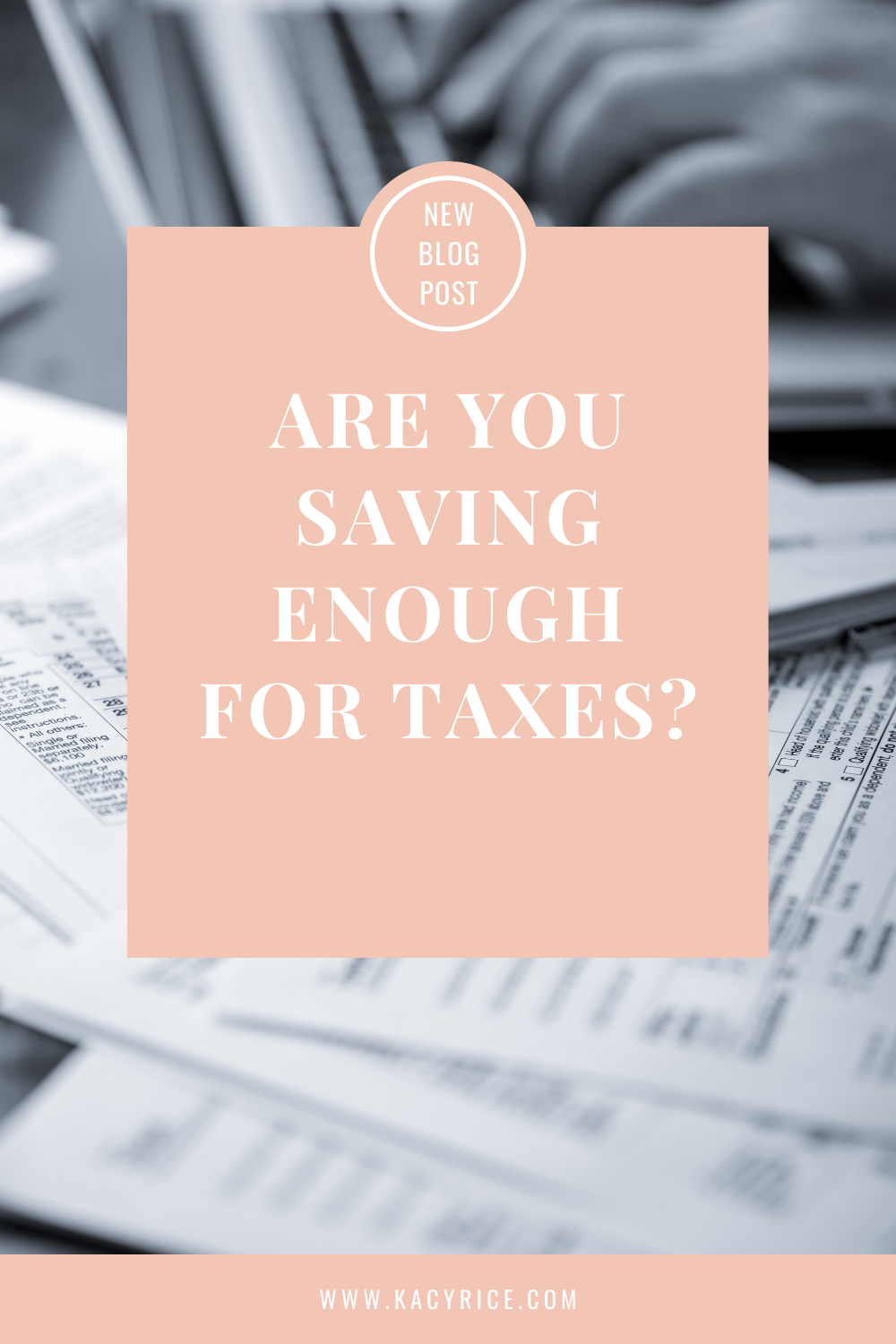Are you saving enough for taxes?
My jaw dropped. I’d asked a dear friend, a successful sole proprietor, how much of each client’s payment he saved for taxes and his answer… was nothing. Zero. I was shocked.
As a finance coach, I thought this was freelancer 101. I assumed my friend had somehow missed what everyone else knew. But the longer I’ve been in business the more I’ve realized that my friend is far from alone - many, many creative small business owners are not saving enough for taxes, which causes unnecessary stress throughout the year and can mean a complete breakdown come April 15th.
Today, I’m going to walk you through how to make sure you’re ready for tax time as a creative with a solo small business.
Decide how much to save
If you work with a CPA, and you should, the fastest way may be to ask them - a quick email should get you a target % to save, and when you file your taxes next year confirm that you were not under or over saving.
If you’re not yet using a CPA to file, and again, please start, I can offer a shorthand trick that I learned from Mike Mikalowicz, author of the excellent book Profit First.
Review your business expenses in relation to your business income. If your income is less than $250,000 annually and your expenses make up at least 30% of that amount, withholding 15% of the gross income off the top could get you where you want to be come tax time.
As an aside, this is not meant to encourage you to spend more of your business income on expenses, quite the opposite. It’s just that the logic of 15% withholding assumes that you’ll be deducting 30% of your gross income in expenses, and if you aren’t (good for you!), 15% may not be high enough and you may want to go with 20% or higher - again, always run this by your CPA.
Automate it
For each new inflow, no matter how small, transfer your chosen percentage out of your business checking account right away. Seriously, immediately. As soon as it hits your bank account, take (for example) 15% and get it out of your checking account so that it doesn’t get confused as part of your budget.
(If you’re very responsible and have a weekly/biweekly money date with your business, you can wait to transfer the whole amount at that time - the point is just not to let it sit around getting mistaken for usable money. Set up a system that you can be consistent with, and do that.)
Use a high yield savings account
Transfer where? Great question. Open a high yield savings account at an online bank different from where you do your business banking. Two reasons for this- you need to get that money out of your checking account or you will accidentally spend it or deliberately borrow against it throughout the year. You want to use a high yield savings account because that money’s going to be sitting around for most of the year and should get the highest interest possible for a cash asset, and most traditional banks offer minuscule interest that’s completely not worth it.
Don’t Touch it!
This is really an addendum to the last tip, but seriously, don’t touch that money until AFTER you’ve paid all federal and state taxes for the year. Set up your quarterly payments to come out of that high yield account, but don’t treat that money as an emergency cash cushion or float fund, two things you should definitely have but need to be separate from your tax savings. If you dip into that account at all for anything not tax-related, you won’t be able to trust that you’re ready for tax time and your stress won’t be relieved. Trust me, it’s not worth it.
So there you have it, my quick and dirty recommendations for saving for taxes as a self-employed creative. Let me know in the comments if you have tax time woes or if you’ve been constantly saving since your started your business, I would love to know!
And if you’re looking for other recommendations to level up your money game, check out my free guide, 6 Money Moves for Self-Employed Creatives.


